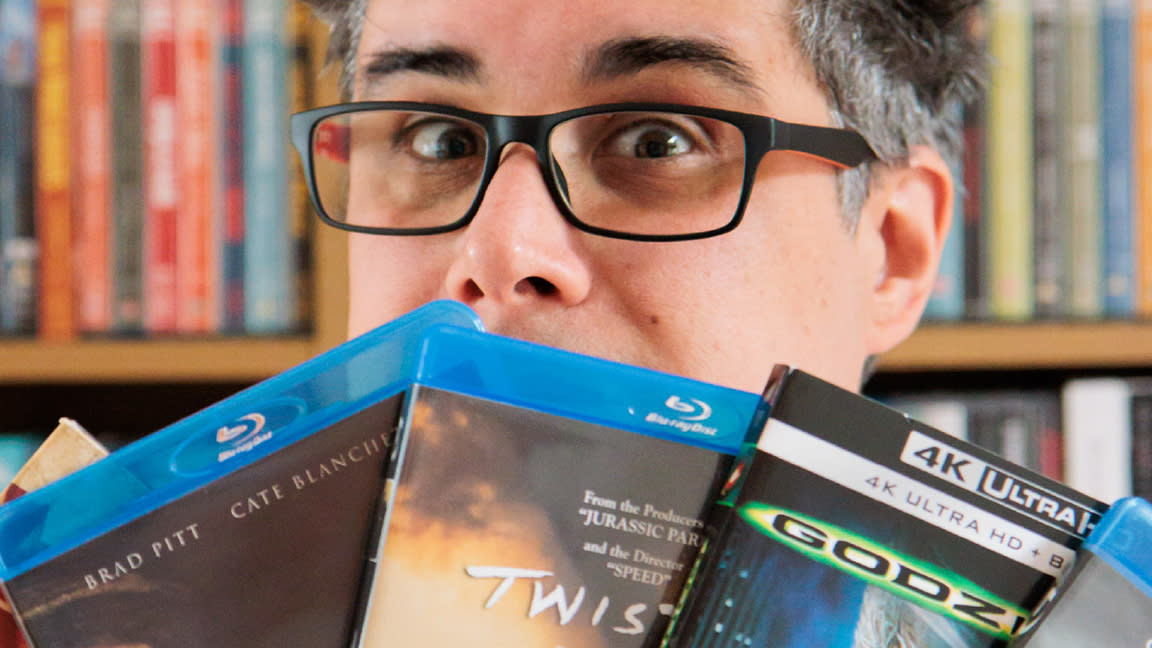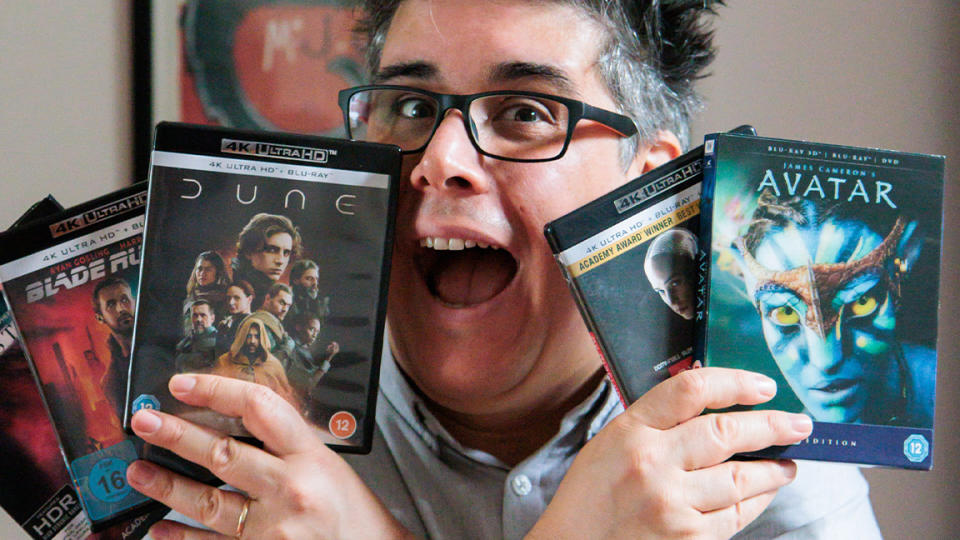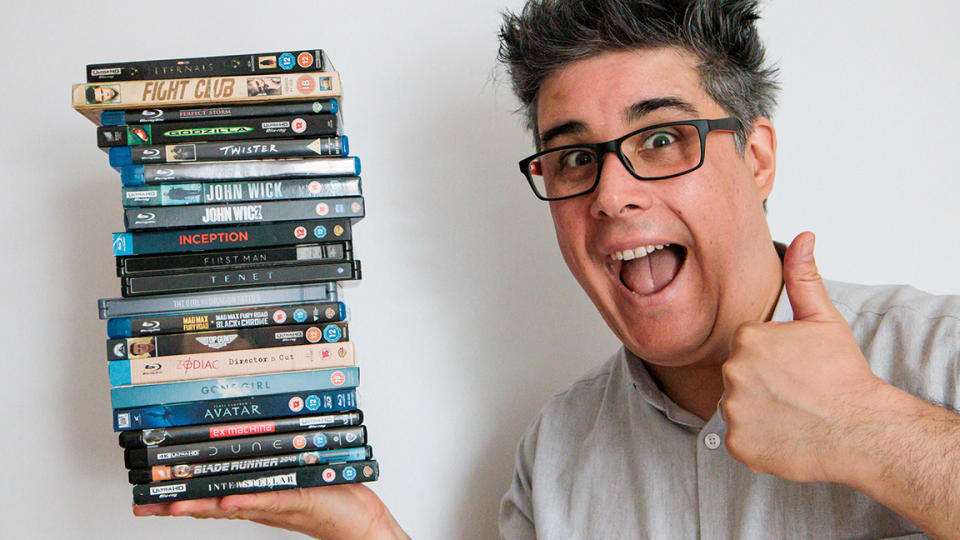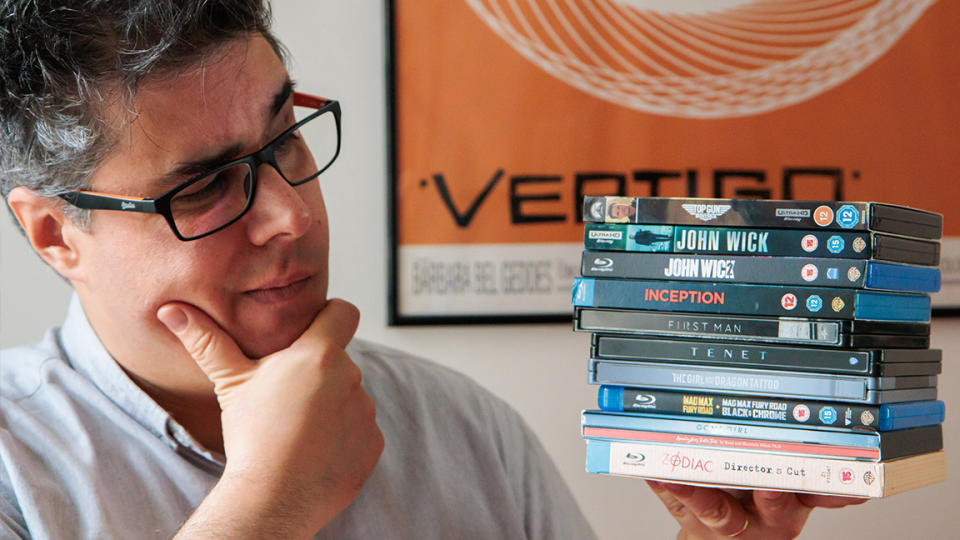CGI in movies, what’s not to like?

- Oops!Something went wrong.Please try again later.
It wasn't that long ago that CGI in movies was considered 'cool' and had the respect and admiration of the general public. Back in the 1990s and 2000s, it inspired an entire generation of filmmakers to push the medium in a way that simply wasn't possible in the 1970s and 1980s. It definitely inspired me to work in visual effects.
Decades later, however, it seems that CGI is not so beloved anymore, or at least that's a narrative that has been conveyed by social media and the mainstream press. So what's happened? Why is there an anti-CGI backlash trend in social media today? Why do we have so many articles, Tweets and YouTube videos complaining about CGI, and explaining that, back in the day, it was all so much better?
However, this 'bad CGI' trend is perhaps a deeper problem that has been growing for some years now
It's easy to blame the film studios, superhero movies, popular YouTube channels, the press or even the Scorpion King sequence from The Mummy Returns. However, this 'bad CGI' trend is perhaps a deeper problem that has been growing for some years now.
But why should we care? We all know social media is not real life, so does it matter that there's a negative sentiment towards CGI and VFX? In my opinion, it does matter. I feel this is a serious problem plaguing the visual effects industry and has a real impact on how audiences perceive it and understand its contribution.
Talking down CGI in movies could damage an industry

In my view, it's already damaging the credibility of the VFX companies by making them scapegoats for the film industry. The more we are blamed for the state of filmmaking today, the harder it will become to green-light projects, approve budgets, have a sustainable work-life balance and, it could also dissuade the next generation of artists from joining the industry altogether.
In my opinion, there's no such thing as a 'bad CGI shot'. There is, however, and quite often, really bad creative input, confusing feedback, terrible shot design, low budgets and a lack of time. Not to mention, that often films are made by a committee of people not so much interested in the creative aspect of filmmaking as they are perhaps, in achieving the highest-grossing profits.
The best films are often the ones that are able to merge everything seamlessly, where there's no difference between practical and digital,
It has become commonplace to say that, practical effects are better, more tactile, grounded and more real than digital VFX. Depending on the concept of the project, this could be the case, and as a VFX Supervisor myself, I believe that in most situations the best VFX is achieved when something is filmed for real since it will serve as a basis for the digital VFX.
Having said that, the best films are often the ones that are able to merge everything seamlessly, where there's no difference between practical and digital, and all departments work together to make an outstanding shot.
The self-declared VFX experts of social media forget that if they don't notice the VFX, it doesn't mean it's not there. Photorealistic CG renders have been around for more than a decade and invisible VFX has been a hallmark of many directors' work over the years. As Andrew Hodgson, Senior Hard Surface Modeller at Double Negative (DNEG), mentioned on Twitter, in reference to Dune Part 1 (a movie he actually worked on), 'CG fatigue' didn't bother anyone when they watched this movie.
Everyone is talking about "CG Fatigue" but it doesn't bother anyone that 90% of these 4 images from Dune Part 1 are completely CG? When the Director has a vision and we get time to do the work right, CG suddenly isn't a problem. https://t.co/3KGGRVqVxgJuly 30, 2023
I completely agree with Andrew. I don't recall anyone complaining about 'too much CG' in Dune or any of David Fincher's movies, for that matter. I only mention Fincher here because he has become synonymous with invisible VFX since most of his work has hundreds of CG shots.
But Fincher is not the only one. Off the top of my head, I can think of some films that have not received any VFX backlash despite the substantial amount of CG on display: Zodiac, Gone Girl, Mad Max: Fury Road, The Girl with the Dragoon Tattoo, Tenet, First Man, Inception, the John Wick series, TopGun: Maverick, just to mention a few. VFX critics don't complain about these films because they're well-directed, have a strong creative vision and use all the tools, both physical and digital to produce a better movie.
Curiously, some people are still convinced that many of these films have no CG at all. For example, a few weeks back I wrote a post on Twitter and was very surprised by the way it was received. At the time of the film's release, most people thought that John Wick 4 was all shot practically and had very little CG or at least, that's what some 'VFX experts' wanted you to believe.
Do you know that Arc de Triomphe scene in Paris at the end of John Wick Chapter 4? It's not real, It’s CGI & VFX with a lot of Stunt work - VFX Notes Podcast with @beforesmag about #JohnWick4. Enjoy the full episode: https://t.co/f2zZqQ7sEu pic.twitter.com/a8sd6cbpKWAugust 14, 2023
Let's also not forget that in 2022, social media was flooded with statements mentioning that Top Gun: Maverick was all filmed for real and that no CGI was used. However, once the VFX breakdowns were released, for instance, from the Visual Effects Society Awards and before & afters shared how the VFX was created, we discovered the huge amount of CG used in that film.
That's why an interesting aspect of this ongoing debate is that although heavy CGI movies have a pretty bad reputation these days, not all films are treated in the same way by the critics. Movies like Ex-Machina, Interstellar, Dune, Avatar, and Blade Runner 2049, among others, are critically acclaimed, were nominated for many awards and won the Oscar for Best Visual Effects.
Of course, all these are considered great movies and have achieved a certain status in popular culture, meaning that they can do no wrong. Either they have no CGI or the CG is ignored because it's invisible, or the creative vision is so well respected that it doesn't matter how much VFX is in the movie.
There's a lot of misuse of CGI terminology
Another problem that contributes to the misunderstanding surrounding the VFX industry is its language. Sometimes when interacting with people on social media, who don’t work in the VFX industry, it feels a bit like a quibble over semantics where no one really understands what they are referring to.
VFX terminology itself can be quite confusing for both the mainstream media and the general public
To a great extent, the VFX terminology itself can be quite confusing for both the mainstream media and the general public. For instance, some of these terms are not used by the industry in the same way people understand them. CG, for example, means computer graphics, and it's usually something rendered in a 3D software, such as Maya, Houdini or Blender. This CG can be composited into a live-action plate using 2D software, like Nuke, Fusion or After Effects, but it can also be a full CG shot, meaning that it's entirely done with 3D software using no footage, but still composited inside a 2D software for final delivery.
A more general and broad term, CGI, means computer-generated imagery, and it's less used by professionals in the VFX industry since it's not specific enough and could mean any work done using a computer.
The problem is that sometimes both the media and the general public think CGI and VFX mean the same thing, and although VFX is created with the help of computers it could also include practical or special effects (SFX) that, normally, are seamlessly merged and digitally manipulated together with CG elements into the footage. Think about digital de-ageing merged with real prosthetics, facial replacement on a stunt double or replacing a superhero’s real suit with partial or full CG after the principal photography is finished, to name a few examples.

But don't take my word for it, read The Filmmaker's Guide of Visual Effects by Emmy and VES award-winning VFX supervisor Eran Dinur, which perfectly illustrates this point.
Dinur writes: "CGI stands for Computer Generated Imagery. People (and the media) use the term "CGI" to talk about visual effects in general ("The CGI in that movie was really awesome!" or "Movies today have too much CGI"), but in professional VFX discourse, CGI (often just CG) has a much more specific meaning.
"It is used to make a clear distinction between VFX elements that were created "artificially" in the computer and real-world elements that were shot with a camera. For example, "a CG ship" refers to a virtual ship that was built, lit, and rendered using computer software, and then composited into the footage digitally.
"On the other hand, a ship (real or miniature) that was shot with a camera as an element for visual effects is not CG. A group of cheering spectators shot on a green screen to be used for crowd tiling in a shot is not CG, but a group of animated digital characters is.
"Despite the popular use of the term, not all visual effects are CGI. In fact, many types of VFX shots do not need any CG at all and are done solely by manipulating the footage or combining it with additional footage or still photos. The distinction is therefore important because CG indicates a different (usually more complex and expensive) process than working with photographed elements."
Many times VFX artists struggle to explain, in simple terms, what they do for a living to someone outside the industry
For that reason, I think the VFX industry needs to be better at explaining itself. I know it's not easy because it's a highly specialised industry, with a very steep learning curve, and many times VFX artists struggle to explain, in simple terms, what they do for a living to someone outside the industry.
Most people can understand and visualise what a painter, carpenter or sculptor does, but it becomes more difficult to figure out what a ZBrush artist, a Nuke compositor or an FX TD (effects technical director) actually does. These job titles are not familiar to the general public and in a way, this creates even more confusion when trying to make sense of the industry as a whole.
Therefore, it would be useful to develop a more straightforward language; for example, wouldn't be easier to refer to someone as a digital sculptor rather than the enigmatic ZBrush artist? (For the record, nothing against ZBrush artists, they're the best!)

Of course, I'm not blaming the VFX artists here, just mentioning that we could all improve communication in order to better explain VFX to the general public. For example, just look at the wonderful work that Stephane Ceretti, Ian Failes, Stephan Fleet and Andrew Hodgson, among others, are doing on social media platforms trying to explain VFX in simple terms and pave the way for more mainstream understanding of our industry.
We need more professionals to speak openly about VFX. I would highly recommend bookmarking this thread from Todd Vaziri, a compositing supervisor at Industrial Light & Magic (ILM), where for a few years now he’s been pointing out every time a film has been incorrectly promoted as not having any CGI.
The film that @CultureCrave told its 800K followers has “no CGI” (*in the jet shots) is on the long list for the Academy Award for visual effects. I’m sure they will soon tell us where in the movie these amazing visual effects are located because they’re not *in the jet shots. pic.twitter.com/bO3f04mG95December 22, 2022
But why does Todd Vaziri even have to point this out? A possible answer could be that the general audience is obsessed with 'practical FXs'. Why is that? This trend of saying practical is better than digital might be because many people prefer the nostalgic and romantic idea of craftsmanship in cinema.
It's probably easier to understand when one artist creates a physical sculpture or prosthetic piece for a movie than to grasp what hundreds of people working on a computer are actually doing.
The fact of the matter is, that they're both artists making something new and creative. This artistic divide is further amplified by many official behind-the-scenes featurettes showcasing only the physical nature of filmmaking and seldom the digital and post-production work.
Back in the 1990s and 2000s this was not the case. Just look at the amazing behind-the-scenes and extras of films like Twister, Godzilla, The Perfect Storm, Fight Club, and The Curious Case of Benjamin Button. All of these films have extended breakdowns, interviews and really detailed documentaries about the practical and digital side of VFX. For some reason, something was lost in the 2010s in terms of showing how a movie is actually made.
One of the reasons these behind-the-scenes don't usually showcase the VFX process might be because the featurettes themselves were created before the film's post-production even started. This makes it difficult for the VFX behind-the-scenes to be included in the home releases since the period between the film’s theatrical run and the home market is much shorter than it was before.
Another reason could be that today, behind-the-scenes is mostly a marketing vehicle for the film studios, and they don't seem to believe that it's important to showcase VFX or in their view, they don't make for a great story.
The Marvel movie Eternals has an audio commentary with Director Chloé Zhao and VFX supervisor Stephane Ceretti which is a treasure trove of knowledge
Not everything is lost, though, some filmmakers are able to make a difference in the way VFX is communicated to the public. For example, the Marvel movie Eternals has an audio commentary with Director Chloé Zhao and VFX supervisor Stephane Ceretti which is a treasure trove of knowledge, very much similar to the audio commentaries with VFX Supervisors from the late 1990s from which I learned so much.
It contrasts with some studios, directors, actors and producers which seem to take every opportunity to throw the VFX industry under the bus! This trend can be problematic because most of the audience doesn't really understand that there are hundreds of people working on a movie.
Filmmaking will always be a collaborative process, and it's a shame that certain filmmakers still try to convince their audience that large productions are instead small, with minimal CG, when most of us in the industry know that it's far from the case.
How can we change the mindset on CGI?
Film studios need to be a bit more ethical with their marketing campaigns and not oversell or misrepresent the way a film is made. We have advertising rules regulating how companies sell their products, and the movie industry shouldn't be immune to such rules or ethical guidelines.
If a certain actor is boasting in interviews that they did all their stunts for real, and later we find out it was actually a digital replacement or a CG takeover, then they should be challenged on those statements and make sure that all departments involved in the making of that stunt or action sequence, including VFX, are acknowledged.
The problem is that almost all VFX artists have to sign an NDA (non-disclosure agreement) so most of the time the truth about the role of digital VFX in a film is not disclosed. In my opinion, the studios should allow their artists to speak more freely so that they can be recognised for their work, showcase their experience and help the public better understand how a movie is actually made.
Having no CGI on a film is a creative choice, just like colour correction, music, sound or even dialogue
Some filmmakers should not contribute to the narrative of no CGI is better. No one ever says that making a movie without sound FX, makeup or music would be superior, so why do people say a film is better because it has no CGI, making it sound like the film is elevated for that reason?
Having no CGI on a film is a creative choice, just like colour correction, music, sound or even dialogue. These features and creative choices should not be presented as solutions to make a film better. Some of the things that can really make a difference in elevating a film are an engaging story, great performances, outstanding cinematography, beautiful set design, and amazing VFX (invisible or otherwise), just to mention a few.
Having said that, filmmakers sometimes are also guilty of misusing digital VFX, using it as a tool to solve problems that could have been fixed during filming, if for example, more time had been allocated to the production. Everyone always says, "Fix it in post", I say let’s "Fix it in prep".

The mainstream media and the general public need to verify their sources. A quick Google search or even checking out IMDB (Internet Movie Data Base) will reveal that most films have hundreds of VFX artists in the credits. These artists, ultimately, are not responsible for the creative direction of a film; they produce what their supervisors ask of them, and in turn, the supervisors follow directions from the client, producer or director. The VFX industry indeed follows an established and thorough hierarchy so that everyone knows their roles and responsibilities.
Artists, ultimately, are not responsible for the creative direction of a film; they produce what their supervisors ask of them
My advice to everyone would be, next time you see a 'bad CGI shot', think of all the artists behind the scenes who had to deal with confusing feedback, lack of sleep, overwork and unreasonable deadlines, making it almost impossible to deliver a 'good CGI shot'.
The next time you share an article or a video in which someone complains about how CGI is killing cinema do your research and draw your own conclusions based on facts rather than on other people's biased opinions.
In the meantime let's all (re)discover great movies, old and new, and celebrate the artists, crew, technicians and everyone making them possible, so that we can enjoy this amazing art form for many years to come.

